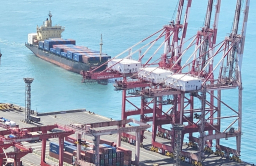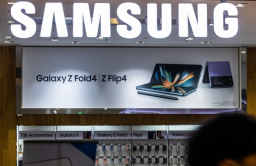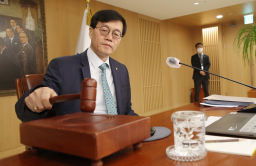-
KOSPI 2577.27 -2.21 -0.09%
-
KOSDAQ 722.52 -7.07 -0.97%
-
KOSPI200 341.49 +0.02 +0.01%
-
USD/KRW 1396 -2.00 0.14%
Korean won near 5-month low despite weak dollar; outlook dark
Foreign exchange
Korean won near 5-month low despite weak dollar; outlook dark
S.Korea is poised to extend trade deficit spree to 14 months; exporters like Samsung, Hyundai have fewer dollars for repatriation
By
Apr 21, 2023 (Gmt+09:00)
4
Min read
News+
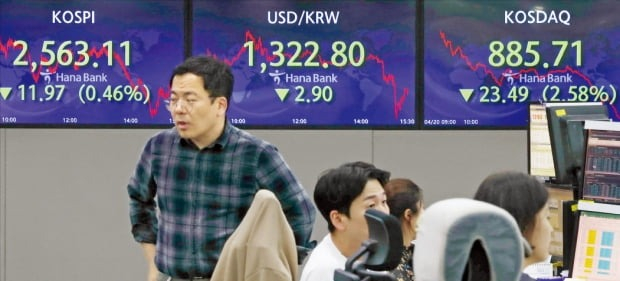
The South Korean won fell to the weakest level in almost five months, underperforming other currencies despite a softer dollar, as sluggish fundamentals of Asia’s fourth-largest economy amid a sustained drop in exports added to the bearish outlook on the local unit.
The won on Thursday lost as much as 0.5% to 1,332.3 per dollar, its softest since Nov. 29, 2022, before the domestic foreign exchange authorities were spotted selling the greenback for intervention to prop up the South Korean currency.
The unit has lost 4.4% versus the US unit so far this year, becoming the worst performer among emerging Asian currencies, even as the dollar index, which tracks the currency’s value against a basket of six major counterparts such as the euro and yen, slid 1.2%.
In February, the won depreciated 7.4%, the largest loss among 34 currencies, the South Korean central bank’s recent report showed.
“The won is likely to soften further to the 1,350 level since it weakened past the support line of 1,320,” said Min Kyung-won, an economist at Woori Bank. “In April, dollar demand usually increases due to corporate dividend payments to foreign investors.”
SLUGGISH EXPORTS
The South Korean currency has been under pressure from deteriorating economic fundamentals, especially due to falling exports.
The country is poised to extend a monthly trade deficit spree to 14 months in April as exports in the first 20 days of this month dropped 11% to $32.4 billion from a year earlier, resulting in a shortfall of $4.1 billion, according to customs data released on Friday.
That ramped up the shortfall to $26.6 billion so far this year, more than half the total deficit of $47.8 billion in 2022.
Exports of semiconductors, the country’s top foreign sales item, tumbled 39.3%, while shipments to China, South Korea’s largest overseas market, skidded 26.8% during the April 1-20 period. The country is home to the world’s two largest memory chipmakers – Samsung Electronics Co. and SK Hynix Inc.
“The won could depreciate further if China’s economic recovery is weaker than expected and various geopolitical tensions intensify,” said Park Sang-hyun, an economist at HI Investment & Securities Co.
South Korea’s current account logged a deficit in February for the second straight month. The country last reported a current account shortfall two months in a row in February 2012.
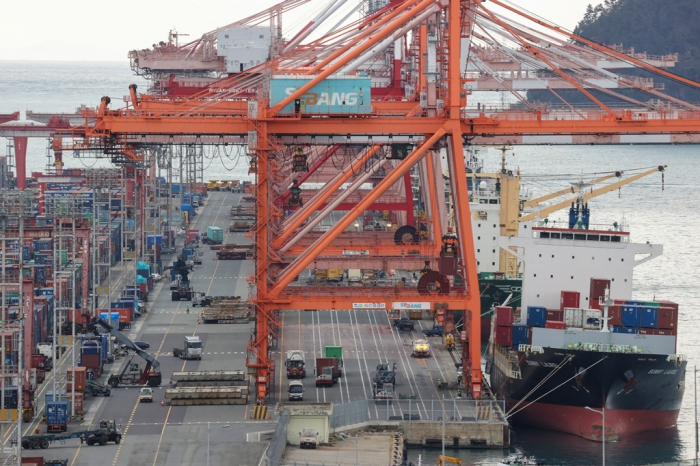
SLOWING GROWTH, WIDENING RATE DIFFERENTIALS
Growth in the trade-dependent economy continues to slow. The BOK is likely to lower its growth forecast for this year from the current 1.6% next month. The central bank already expected growth to miss the prediction last week when it left the policy interest rate at 3.50% for a second straight meeting.
The International Monetary Fund recently cut its forecast for South Korea’s economic growth for this year to 1.5% from 1.7%.
Such a bearish outlook is expected to prevent the BOK from raising the base interest rate further although the Federal Reserve is predicted to keep tightening its monetary policy. That is likely to put more pressure on the won.
The US central bank may raise its policy rate to a range of 5.00-5.25% in May, according to foreign media, increasing interest rate differentials between the two countries to up to 1.75 percentage points.
“The gap needs to be around 1 percentage point to minimize its direct and indirect impacts such as capital outflows,” said Yi Insil, the head of the Korean Peninsula Population Institute for Future. Yi was a president of the Korean Economic Association and an economics professor at Sogang University.
REDUCED DOLLAR INFLOW
Major exporters including Samsung and Hyundai Motor Co. did not bring as many dollars earned in other countries as before back home. They had supported the won by repatriating money collected in overseas markets through exports to South Korea.
But falling exports and increasing investments in other countries reduced their dollar holdings to send back to their headquarters, industry sources said.
Semiconductor exports dropped 39.2% to $21 billion in the first quarter as chip prices lost ground on weakening demand.
Samsung suffered a 95.8% plunge in operating profit to 600 billion won ($451.3 million) with sales down 19% to 63 trillion won in the January-March period on tumbling chip exports. Its overseas sales are likely to fall short of 189.7 trillion won last year, given the slumping global semiconductor market.
The South Korean tech giant is building a $17 billion chipmaking plant in Taylor, Texas, which will begin operations in 2025. But the construction cost was expected to increase by some $8 billion due to the rising inflation in the US.
Hyundai, South Korea’s top automaker, was set to spend some $10 billion on the US electric vehicle and robotics sectors by 2025.
“Hyundai is managing its dollar holdings in the US as large investments are scheduled there,” said an industry source in Seoul.

Other major exporters have similar plans. LG Energy Solution Ltd., SK On Co. and Samsung SDI Co. are building factories in the US to benefit from Washington’s policy to boost its own EV industry with tax credits.
Write to Jin-gyu Kang and Ik-Hwan Kim at josep@hankyung.com
Jongwoo Cheon edited this article.
More To Read
-
Apr 13, 2023 (Gmt+09:00)
-
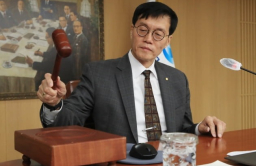 Central bankBOK chief says tightening not over after rate freeze
Central bankBOK chief says tightening not over after rate freezeApr 11, 2023 (Gmt+09:00)
-
Apr 07, 2023 (Gmt+09:00)
-
Feb 23, 2023 (Gmt+09:00)
-
 Electric vehiclesHyundai Motor to boost US presence with $5.5 bn new Georgia EV plant
Electric vehiclesHyundai Motor to boost US presence with $5.5 bn new Georgia EV plantOct 26, 2022 (Gmt+09:00)
-
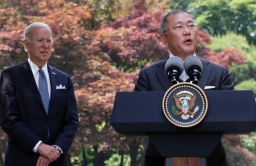 Electric vehiclesHyundai to invest $10.5 bn in US EV, future mobility sectors
Electric vehiclesHyundai to invest $10.5 bn in US EV, future mobility sectorsMay 22, 2022 (Gmt+09:00)
-
 Korean chipmakersSamsung’s $17 billion new chip plant in Taylor aims to rein in TSMC
Korean chipmakersSamsung’s $17 billion new chip plant in Taylor aims to rein in TSMCNov 24, 2021 (Gmt+09:00)


